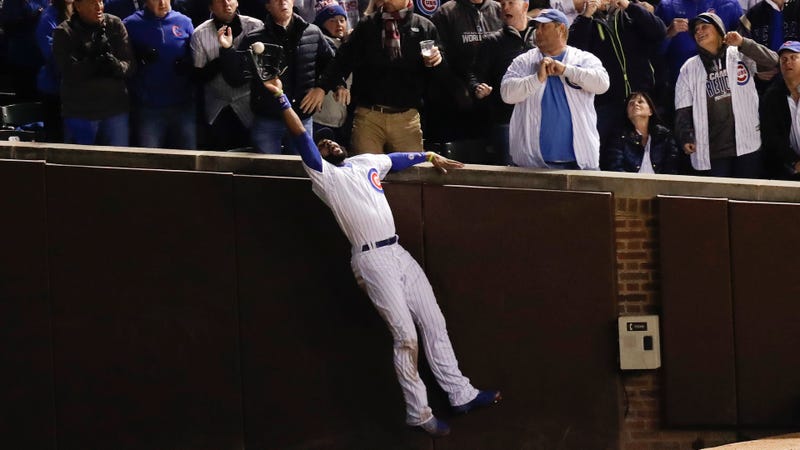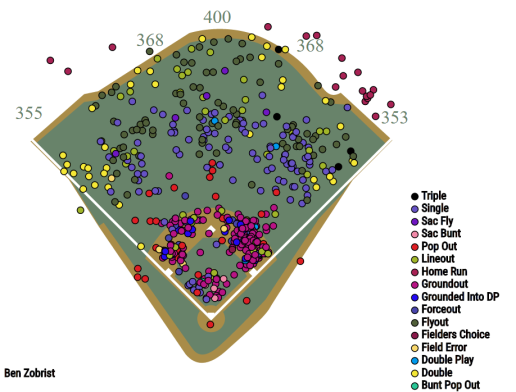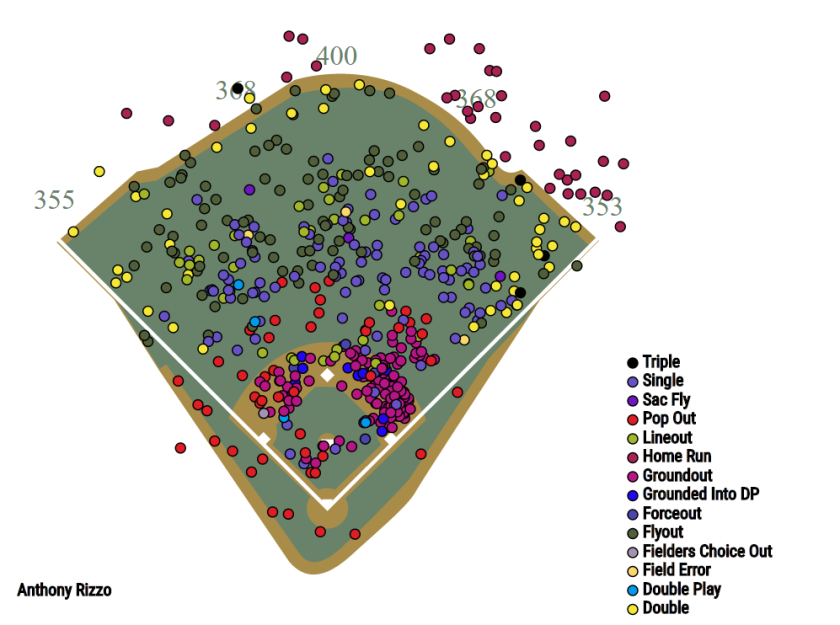
In the past two years, the Chicago Cubs have had two Cy Young finalists and one Cy Young winner. In 2015, Arrieta won the Cy Young Award, and in 2016 Jon Lester was the runner up, with Kyle Hendricks taking third place.
The Cubs had the 3rd most fWAR by starting pitchers, and they had by far the lowest staff ERA in the majors at 2.96. The next lowest ERA was 64 points behind them at 3.60. While part of this was due to excellent defense, the Cubs still had the 4th lowest staff FIP, putting them in the elite company of the Mets, Dodgers, and Nationals.
There is no question that the Cubs have an elite staff, but the question is how much their staff success was due to excellent defense, and whether they can repeat their 2016 success. In this Position by Position post, we’ll take a look at the top of the rotation for 2017, consisting of Jon Lester, Kyle Hendricks, and Jake Arrieta, as well as what we can expect from these starters this year.
Jon Lester

Jon Lester had an excellent 2016 and capped it off with a stunning performance in the playoffs. While he did not command the lowest ERA among Cubs starters (that honor belonged to Kyle Hendricks) he placed second in Cy Young voting and was worth an excellent 4.3 fWAR. Lester’s 2.44 ERA (2nd lowest in baseball) and 3.41 FIP (9th lowest) were some of the best of his career. In fact, it was the lowest ERA he has put up in his 10 years in the big leagues.
Lester compounded that feat by pitching 202.2 innings and starting 32 games. He won 19 games, if that’s something that you care about, and only lost 5. He had an excellent K/9 ratio (8.75) and BB/9 (2.31) and pitched his way to 2 complete games. He had 197 strikouts and only 52 walks.
While he still has problems throwing to first base, Lester had one of his best seasons in the big leagues last year. He also contributed in the postseason, where he had an excellent 2.02 ERA in 35.2 innings. He was the NLCS Co-MVP with Javier Báez and struck out 30 batters in the playoffs. Lester also came out in relief in Game 7 of the World Series and was excellent, and he was a critical part of the Cubs rotation all throughout last year.
Can Lester repeat his 2016 success? Both Steamer and Depth Charts have Lester worth over 4.0 fWAR next year, and both predict he will have an ERA under 3.50. His strikeout and walk rates should stay fairly consistent, but with a different defensive look it is hard to predict how his excellent ERA might be affected with Schwarber in left and without Fowler in center. While we can expect some regression, Lester is still set to be the ace at the top of this Cubs staff.
Kyle Hendricks

It’s not everyday that a pitcher is able to drop almost 2 full points in ERA in one year, but that’s exactly what Kyle Hendricks did in 2016. Hendricks’2016 was far better than almost anyone could have predicted and he put up excellent numbers across the board. He had a career high in fWAR (4.5, the most on the Cubs staff) and had a career low in ERA (2.13) and FIP (3.20). He struck out the most batters of his career (170 SO) and only gave up 44 walks in 190 IP.
In the postseason, he might have been even better. Hendricks put up a 1.42 ERA in 25.1 innings and started the clinching game against the Dodgers in the NLCS where he pitched brilliantly and Game 7 of the World Series before he was relieved by Jon Lester. He only allowed 5 runs in 5 games and struck out 19 in the playoffs.
The 264th overall pick out of Dartmouth is never phased, and though he relies on command more than speed, his contact oriented and ground ball approach (48.4% ground ball rate last year) works well with the excellent defense of the Cubs. While he was good on the road (2.95 ERA) he was outstanding at home where he put up a minuscule 1.32 ERA in 95.1 innings.
Although Hendricks seems like a prime candidate for regression to his more normal numbers, Depth Charts has him projecting 3.3 fWAR and having a 3.40 ERA, not too shabby all things considered. The key for Hendricks going forward is to maintain a healthy ground ball rate and let the defense do the rest. The Cubs had a historically good defense and Hendricks used that to his advantage as he pitched his way to a his best season in a Cubs uniform to date.
Jake Arrieta

2016 was an off-year, at least by Arrieta standards. After all, he only pitched his second no-hitter, had a 3.10 ERA, and was worth only 3.8 fWAR. He only pitched 197.1 innings, struck out 190 batters, and went 18-8. So for Arrieta, it was a disappointing year when compared to his last two.
Arrieta didn’t have a Cy Young worthy year, but he again continued to impress since coming to Chicago in 2013. The 5th round pick has been worth a combined 16.1 fWAR the past three years, and put up excellent performances in both the 2015 and 2016 postseason. Arrieta went 2-0 with a 2.38 ERA in the World Series to lead the Cubs to their first title in 108 years, and was easily the most dominant Cubs starter during that series.
Arrieta has always had overpowering, no-hitter type stuff, but until coming to the Cubs he had struggled both in the minors and in the majors. In the deal that also brought relief pitcher Pedro Strop to Chicago, the Cubs surely got the best of that trade. Both acquisitions bloomed into excellent pitchers and were critical to the Cubs’ World Series run.
Arrieta is projected to have a very similar 2017. According to Steamer and Depth Charts, his ERA will take a slight hit (3.39 and 3.20 respectively) but he projects to be worth more wins with fWAR at 4.0 and 4.1 respectively. Look for Arrieta to have another solid year as he tries to impress the Cubs enough for the lucrative extension that he is looking for.
****
Between the three All-Star caliber pitchers at the front of the rotation, the Cubs starting pitching staff looks strong heading into this upcoming season. That being said, ace Jon Lester is not getting any younger, and as of right now Jake Arrieta and John Lackey are set to depart after this season. For right now, the Cubs are in great shape with regards to their starting pitching at the top of the rotation, but next year there are certainly questions.
In the next Position by Position, we’ll take a look at John Lackey and some of the possible #5 starters who could emerge as key pieces to the Cubs staff in the future.












You must be logged in to post a comment.